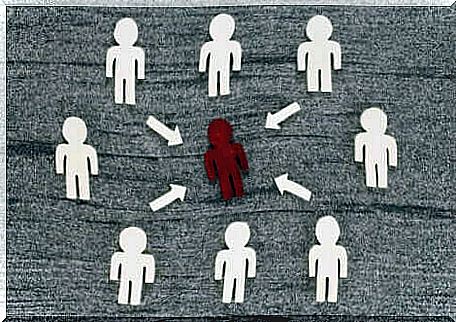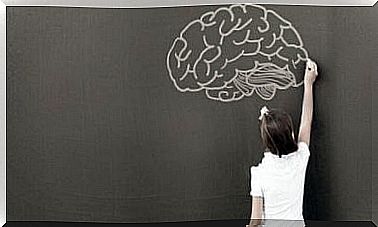Asch’s Experiment: How Far We Let Ourselves Go

Asch’s experiment is one of the best known in social psychology when it comes to group compliance. The simplicity of its procedure and the generalizability of its results have laid the foundations for studies on how the majority can influence our decisions, and even our perception of the world.
Here we invite you to experience one of the simplest, most fascinating and illuminating experiences in the history of psychology. So read on!
Solomon Asch and his influence in social psychology
Solomon Asch, born in Warsaw in 1907, is the leading reference in social psychology for studies of conformism. He effectively focused his studies on the influence of the group on the individual, contributing to the creation of certain concepts such as the halo effect and the primacy effect.
However, the experience that marked his career was that of 1951. In this study, Asch hoped to demonstrate that people can go against the grain when they understand that the majority are wrong.
But unfortunately the reality is capricious! He did find the results that supported the opposite hypothesis. Find out how this experience went. Its simplicity and all the branches that flow from it forever changed the paradigm of the study of social influence.

Asch’s experiment: how far we let ourselves go
Asch’s experiment is straightforward. Participants were asked to use their sight to answer a question with three response options. The procedure was as follows:
- Groups of 7 to 9 people were formed, all of whom, except the critical subject, were accomplices of the experimenter.
- All subjects received two cards: one with a baseline and one with three options, each of which was a different length line. Only one of these three lines was the same length as the reference line.
- During the first tests, all the accomplices gave the correct answer. But, at some point, everyone agreed on an answer that was wrong. For example, if the line that was the same as the one on the reference card was A, everyone said it was C.
At this stage, what do you think the critical subject would respond to? The logic is that even if everyone is wrong, that person disputes with the answer they think is correct. However, this was not the case. When all the accomplices agreed to choose a clearly wrong option, many critical subjects responded as did the group.
The results paradigm
How is it possible ? In a task as simple as looking at a line and saying which of the others is the same. In principle, there is no room for error, but everyone sees what they see.
This is where Asch’s most important discovery comes in. Namely that many subjects claimed to have seen a line as long as the first, when this was clearly not the case.
In other words, not only is the opinion of the individual modified by what the majority say, but the physical perception itself is sensitive to this influence. The criticism that has been made of this experience is that, being a matter of an unimportant task, the subject could answer the same thing as the others by the simple interest of avoiding the dilemma.

Reflections on Asch’s Experiment
These findings brought a very important question to social psychology: How willing are we to change our opinions, decisions, and even perceptions due to the influence of others?
In this sense, the fundamental approach to experience favors generalization to everyday situations. Leisure is marked by groups of friends, professional careers are strongly conditioned by the opinion of the family, including racial hatred such as racism or machismo.
It is important to ask ourselves to what extent we consider certain things important enough to oppose them . Often, the manipulation of the system consists in trivializing certain aspects of life in order to obtain the conformity of the individual.
Finally, we have just covered a simple experiment, but what about this influence when it comes to voting? Or not to vote? For example, is fashion important enough to condemn a man wearing a skirt?









